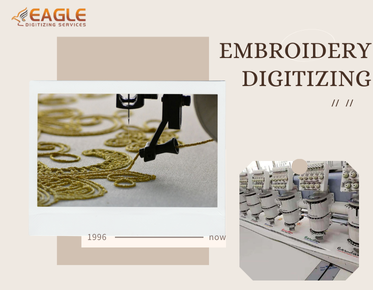Screen Printing with a Green Twist: Sustainable Fabric Picks
In a time where environmental consciousness is more crucial than ever, the screen printing industry is undergoing a transformative shift toward sustainability. Embracing eco-friendly and sustainable fabrics not only reflects a commitment to protecting our planet but also caters to a growing market of eco-conscious consumers. By incorporating these innovative materials into your designs, you contribute to a greener future while enhancing the aesthetic and functional value of your creations. Read Here are Some Vital Elements That You Should Comprehend About vector conversion service!
The Impact of Sustainable Choices on the Environment
Sustainable choices in screen printing can significantly reduce waste, conserve resources, and lower pollution levels. Fabrics made from organic or recycled materials require less water and energy to produce compared to their conventional counterparts. Moreover, they often involve less toxic chemicals, which contributes to cleaner water systems and healthier ecosystems. By making these choices, you're actively participating in a global movement towards environmental stewardship.
Recycled Polyester: Turning Waste into Wearable Art
What is Recycled Polyester and How is it Made?
Recycled polyester is derived from post-consumer plastic bottles and other plastic waste. The process involves cleaning and breaking down the plastic into small flakes, which are then melted and spun into new polyester fibers. This method not only reduces plastic waste but also conserves resources by reusing existing materials rather than producing new ones.
Advantages of Recycled Polyester for Screen Printing
Recycled polyester offers several advantages for screen printing. It boasts excellent durability and resistance to wrinkles, which means prints remain sharp and vibrant even after multiple washes. Additionally, its moisture-wicking properties make it suitable for athletic wear and other high-performance applications, making it a versatile and sustainable choice.
Key Considerations When Printing on Recycled Polyester
While recycled polyester is a robust and eco-friendly material, it requires specific printing techniques to achieve optimal results. Ensure that your inks are compatible with synthetic fabrics to avoid issues with adhesion. Additionally, consider the fabric’s texture, as it may affect the appearance and feel of your prints. Proper preparation and testing are crucial for achieving the best outcome.
Bamboo Fabric: The Eco-Friendly Superstar
Why Bamboo is a Top Choice for Sustainable Printing
Bamboo fabric has emerged as a frontrunner in the world of sustainable textiles due to its rapid growth and minimal environmental impact. Bamboo is naturally antimicrobial and biodegradable, which contributes to its eco-friendly profile. Its soft texture and natural sheen also make it an attractive option for high-quality screen printing.
The Process of Creating Bamboo Fabric
The creation of bamboo fabric involves a few steps. Initially, bamboo stalks are harvested and processed into a pulp. This pulp is then transformed into fibers through a mechanical or chemical process. The result is a fabric that combines sustainability with a luxurious feel, ideal for screen printing applications.
Tips for Achieving Great Prints on Bamboo
To ensure successful screen printing on bamboo fabric, choose inks designed for use with natural fibers. Bamboo’s smooth surface requires careful handling to prevent ink bleeding and ensure crisp, vibrant prints. Pre-wash the fabric to remove any residual processing chemicals that might interfere with ink adhesion.
Hemp: Durable and Eco-Conscious
The Benefits of Using Hemp in Screen Printing
Hemp is celebrated for its strength and durability, making it an excellent choice for screen printing. This resilient fabric not only withstands the rigors of the printing process but also holds up well over time. Hemp is also highly breathable and naturally resistant to mold, adding functional benefits to its eco-friendly attributes.
How Hemp Fabric Stands Up to the Printing Process
Hemp fabric’s robustness makes it suitable for various printing techniques, including screen printing. Its natural texture can enhance the visual appeal of prints, giving them a unique, organic quality. However, its coarse nature may require adjustments in ink formulation and printing pressure to achieve optimal results.
Combining Hemp with Other Fabrics for Enhanced Results
Hemp can be blended with other fabrics to balance its durability with added softness or flexibility. Combining hemp with organic cotton or bamboo, for example, creates a fabric that benefits from the strengths of each component. This approach not only improves the texture but also maintains the sustainable ethos of the material.
Tencel/Lyocell: The Luxurious and Green Option
What Makes Tencel a Sustainable Fabric?
Tencel, or Lyocell, is made from sustainably sourced wood pulp, typically from eucalyptus trees. The fabric is produced through a closed-loop process, which means the chemicals used are recycled and reused, minimizing waste and environmental impact. Tencel is renowned for its silky texture and eco-friendly production, making it a premium choice for sustainable fashion.
Printing Techniques for Tencel Fabrics
When printing on Tencel, use inks that are compatible with its smooth, semi-gloss surface. Tencel’s moisture-absorbent properties can affect ink absorption, so proper testing and adjustments are essential. For best results, employ techniques that enhance the fabric’s natural sheen and softness.
Why Tencel is Ideal for High-End Screen Printing Projects
Tencel’s luxurious feel and environmental credentials make it ideal for high-end screen printing projects. Its ability to drape beautifully and hold intricate prints adds a touch of sophistication to any design. Choosing Tencel for premium garments not only aligns with sustainable practices but also elevates the overall quality of your creations.
Modal: Soft, Sustainable, and Stylish
Understanding Modal Fabric and Its Eco-Friendly Attributes
Modal is a type of rayon derived from beech tree fiber. It is known for its exceptional softness and smooth texture, which is enhanced through a sustainable production process. Modal’s eco-friendly attributes include lower water and energy consumption compared to conventional fabrics, making it a green choice for screen printing.
How to Get the Best Results When Printing on Modal
For optimal results when printing on Modal, select inks that adhere well to its smooth surface. Modal’s high absorbency can affect ink drying times, so allow sufficient time for curing. Additionally, test different printing techniques to find the best method for achieving vibrant and durable prints.
Modal vs. Other Sustainable Fabrics
Compared to other sustainable fabrics, Modal stands out for its unparalleled softness and drape. While fabrics like organic cotton and hemp offer durability and environmental benefits, Modal provides a luxury feel that can elevate designs to a new level. Its balance of sustainability and comfort makes it a unique option in the realm of eco-friendly textiles.
Cork Fabric: A Unique and Sustainable Choice
Exploring the Benefits of Cork Fabric for Screen Printing
Cork fabric, made from the bark of cork oak trees, offers a distinctive and sustainable alternative to traditional textiles. Its natural texture and durability make it suitable for various applications, including screen printing. Cork is also lightweight and water-resistant, adding functional benefits to its eco-friendly profile.
How Cork is Processed and Used in Fashion
The processing of cork involves stripping the bark from cork oak trees, which regenerates naturally over time. This process does not harm the trees and supports a sustainable industry. Cork fabric is then created by bonding cork granules to a fabric backing, resulting in a material that is both unique and environmentally responsible.
Tips for Printing on Cork for Optimal Results
When printing on cork fabric, use specialized inks designed for non-porous surfaces. Cork’s texture can affect ink absorption, so proper testing and adjustments are essential. Additionally, ensure that the cork is properly treated to enhance ink adhesion and durability.
Econyl: The Revolutionary Recycled Nylon
What is Econyl and How is it Made?
Econyl is a type of recycled nylon made from discarded fishing nets, fabric scraps, and other nylon waste. The production process involves regenerating these materials into new nylon yarns through a closed-loop system. Econyl’s innovative approach to recycling reduces waste and conserves resources.
The Advantages of Using Econyl in Screen Printing
Econyl offers several advantages for screen printing, including excellent durability and color retention. Its resistance to wear and tear makes it suitable for high-performance applications, while its sustainability credentials align with eco-friendly values. Econyl’s ability to be recycled multiple times enhances its appeal as a sustainable material.
Printing on Econyl: Tips and Techniques
When printing on Econyl, use inks specifically designed for synthetic fabrics. Proper preparation and pre-treatment of the fabric can improve ink adhesion and print quality. Additionally, test various printing methods to ensure the best results and maintain the material’s sustainability attributes.
Pineapple Leather (Piñatex): Sustainable and Innovative
Introduction to Piñatex and Its Eco-Friendly Features
Piñatex, or pineapple leather, is an innovative material made from the fibers of pineapple leaves. This sustainable alternative to traditional leather utilizes agricultural waste and provides a unique, cruelty-free option for fashion and design. Piñatex is both durable and biodegradable, making it a standout choice for eco-conscious projects.
How to Print on Pineapple Leather
Printing on Piñatex requires specialized inks and techniques due to its unique texture and composition. Choose inks that adhere well to the leather’s surface and test different printing methods to achieve the desired results. Proper handling and preparation are crucial for maintaining the material’s eco-friendly qualities.
Piñatex vs. Traditional Leather: A Sustainable Comparison
Compared to traditional leather, Piñatex offers several environmental advantages. Traditional leather production involves resource-intensive processes and harmful chemicals, while Piñatex utilizes renewable resources and reduces waste. Choosing Piñatex supports sustainable practices and provides a modern alternative to conventional leather.
Soy Fabric: A Lesser-Known Eco-Friendly Option
Benefits and Characteristics of Soy Fabric
Soy fabric, derived from soy protein fibers, offers a soft and sustainable alternative to conventional textiles. Its natural properties include breathability and moisture-wicking abilities, making it comfortable and functional for various applications. Soy fabric also benefits from a lower environmental impact compared to traditional materials.
Printing Techniques for Soy-Based Fabrics
When printing on soy fabric, use inks designed for natural fibers to ensure optimal adhesion and color vibrancy. Soy fabric’s texture can affect ink absorption, so proper testing and adjustments are essential. Consider pre-treating the fabric to enhance print durability and achieve the best results.
Why Soy Fabric is Gaining Popularity in Screen Printing
Soy fabric’s eco-friendly attributes and luxurious feel are driving its popularity in the screen printing industry. Its sustainability, combined with its softness and performance, makes it an attractive option for high-quality prints. As awareness of sustainable materials grows, soy fabric’s unique benefits continue to capture the attention of designers and consumers alike.
Upcycled Fabrics: Creativity Meets Sustainability
What are Upcycled Fabrics and How Are They Used?
Upcycled fabrics are created from discarded or unused textiles that are repurposed into new products. This creative approach to sustainability reduces waste and extends the life cycle of materials. Upcycled fabrics can range from vintage clothing to surplus textiles, offering a wide range of possibilities for innovative designs.
How to Incorporate Upcycled Materials in Screen Printing
Incorporating upcycled materials in screen printing requires careful consideration of fabric types and conditions. Evaluate the quality of the upcycled fabric and prepare it accordingly to ensure good ink adhesion. Embrace the unique characteristics of upcycled materials to create one-of-a-kind designs that reflect both creativity and sustainability.For the premier online vector conversion, feel free to connect with us.
Embracing sustainable practices in screen printing is more than a trend—it's a movement towards a more responsible and innovative industry. By incorporating eco-friendly fabrics into your designs, you contribute to a greener future and inspire others to follow suit. Make the switch to sustainable materials and become a part of the solution for a better world.



